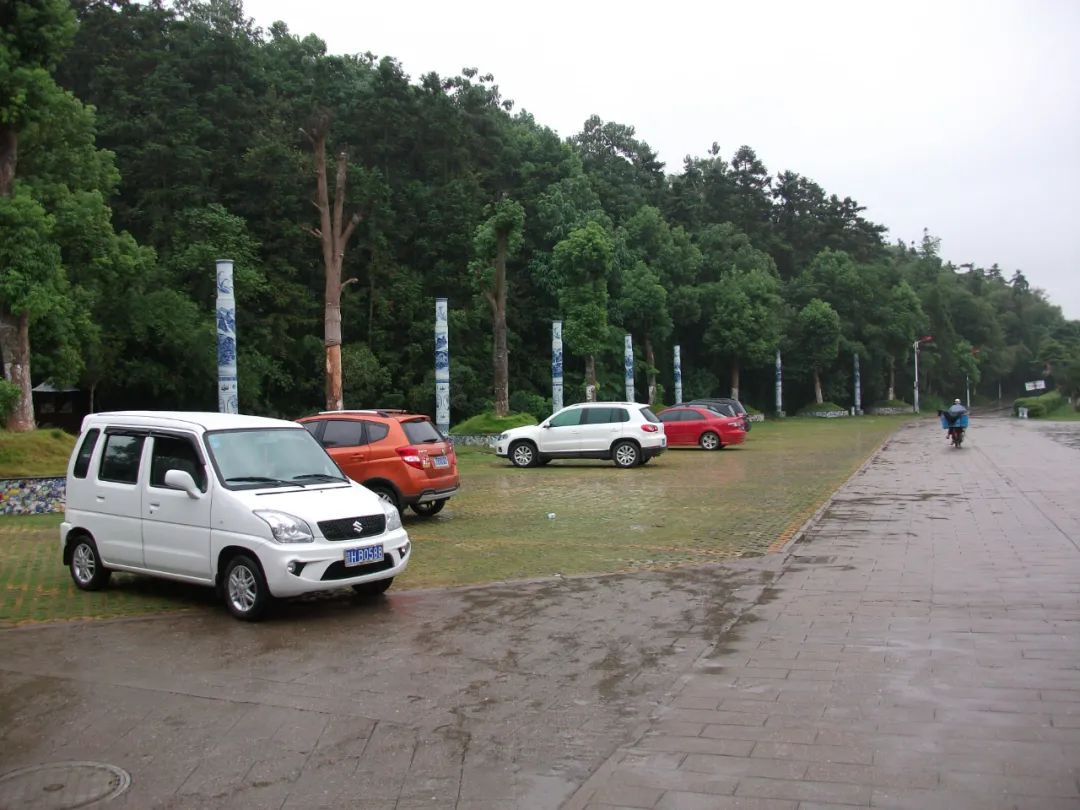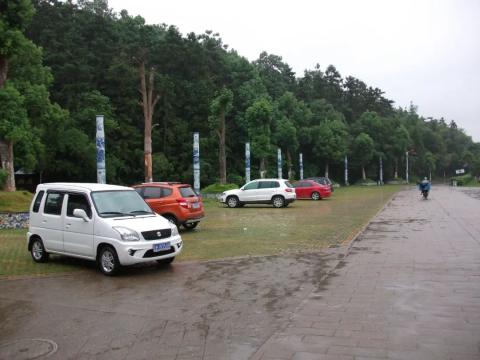Time: August 25 and 26, 2011
Location:Jingdezhen City, Jiangxi Province
Jingxiang Travel Notes Chapter 35丨 "Journey to Jiangxi" (4) Jingdezhen
After visiting Wuyuan, I took the train to Jingdezhen at around four o'clock in the afternoon. Teacher Sheng from Jingdezhen warmly received me.In this city with a small population and a small territory, which cannot be said to be prosperous today, everything is so ordinary. Even the street lights are erected on both sides of the road like other cities. However, careful people will find that the lampposts of street lamps are not made of cement, steel, or wood, but of fired ceramics.

Maybe you will say: "What's novel about this? Every city will use this method to highlight its own industry." Yes, every time you visit a city you will see city sculptures related to local culture. From this perspective, it is indeed ordinary to use ceramics to make lamp posts in Jingdezhen, which is famous for its ceramics. However, have we noticed that ceramics are fragile items. In many cities, street lamp posts made of cement and steel are still scarred and covered with psoriasis. Can such fragile ceramics withstand the torment? The citizens of Jingdezhen tell us with their actions: Yes! The picture below shows a ceramic lamp post in an area under construction. It is still clean and intact.

There is no doubt that a group of extraordinary citizens live in this seemingly ordinary city. They have been influenced by ceramic art for a long time and have developed a good character of loving their hometown and respecting the fruits of other people's labor.The formation of this kind of character is inseparable from Jingdezhen's ceramic culture. Here, it is difficult to see mass-produced ceramic ware with decals, or even two identical tea cups in a set of tea sets. Although the pattern of the six cups seems to be the same, as long as you If you look closely, you will find that they are all drawn by hand and cannot be exactly the same. It is precisely because of this cultural concept that Jingdezhen has become a gathering place for ceramic art masters across the country. Their exquisite works can only make you say four words - eye-opening.
In front of this work, like many outsiders, I said "beautiful" and moved away. However, when Teacher Sheng focused the magnifying glass on the work, the true artistic value was revealed —Oh my god, every monkey hair looks like it grew naturally! 
If you haven't understood the meaning of "meticulous" yet, I believe you will understand it completely after reading this work.Every work here is poured with the artist's hard work. As long as there is a slight error in each process, the previous work will be invalid.In order to let me experience this meticulousness firsthand, Teacher Sheng took me to a very special place - Jingdezhen Ancient Kiln Folk Customs Expo Area. This is located in Changjiang District, Jingdezhen City Fengshushan Panlonggang, covering an area of 83 hectares, is unique because it is a cultural tourism scenic spot that integrates cultural expo, ceramic experience, entertainment and leisure. It is the only national-level tourist attraction in the country with ceramic culture as its theme.In the ancient kiln display area, you can see the entire manual process of ceramic production. Most of the staff here are elderly, and their daily job is to use ancient craftsmanship to make porcelain.
This manual work cannot be done carelessly.

Can you imagine? These patterns, which are almost equivalent to computer typesetting, were actually carved out by the artist carefully, one stroke at a time! He has completed most of the workload. If he made a mistake at this moment, there can only be one word to describe it - miserable!
The furnaces of the ancient kilns are firing the works that these artists have devoted themselves to.
These fired works can be seen at a glance in the Ceramic Folklore Exhibition Area . 
In the rest area, you can watch a unique artistic performance.

From the picture, there is nothing special about this performance, but when I saw the banner above the stage, the words "Qi Porcelain Charm" made me immediately notice that the instruments used by these girls were all Made of ceramic! The porcelain erhu can still be called erhu, but the flute cannot be called "bamboo flute". Of course, the tea table in front of me is also made of ceramic.

Everything here is full of artistic atmosphere, but when I walked through a door, I found that this couplet violated the law:
This scenic spot was built in 1980, when reform and opening up had just begun. The ten-year Cultural Revolution turned folk couplets into slogans. For example, the Spring Festival couplets sold by Xinhua Bookstore actually had slogans like this:
The army and the people are united as oneLet’s see who in the world can defeat youTextbooks do not teach the rules of couplets, so people gradually think that couplets are as simple as two lines of Chinese characters with an equal number of characters. Therefore, it is not surprising that such seriously illegal couplets appear in scenic spots. To this day, online comparisons of couplets Most of them are netizens who don’t understand the rules of couplets, and what they make is the mistake of this couplet in the scenic spot.However, the level of ceramic art in Jingdezhen is indeed very high, and the civilized level of the citizens is also very high. This is my experience during this trip to Jingdezhen: Art is elegant culture, and it is also a good remedy for impetuousness and quick success. It ultimately cultivates people. temperament. In this city that has been gradually abandoned by modernization, it tenaciously maintains a simple and elegant artistic complex, and is worthy of being an art city. Preview for the next article: I didn’t take notes on Nanchang, Jiujiang, Poyang Lake, etc. in Jiangxi. The next article will move to Zhejiang and write about Shen Yuan, which I also didn’t take notes on. The reason is that I admire Lu You’s "The Hairpin Head Phoenix".












